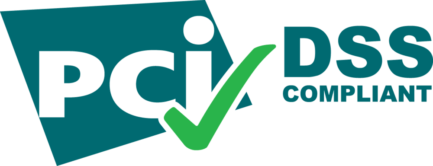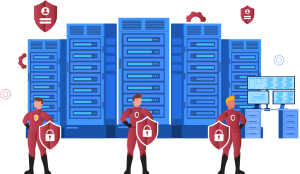PCI DSS service
What is PCI DSS?
PCI DSS ensures that your systems that process, transmit and store sensitive credit card information are secure. Businesses with this system mean that customers can trust them. It is an ongoing process and keeps the company alive against information theft and security attacks. It facilitates compliance with other standards such as TSE, Cobit, ISO 27001. The organization creates a solid foundation for information security. It positively impacts the continuous improvement opportunities of the IT infrastructure.
The e-commerce market has reached a volume of billions of dollars. PCI DSS, known as the Payment Card Industry Data Security Standard, is a required information security standard for organizations using credit cards.
The PCI Standard is mandated by card brands, but is governed by the Payment Card Industry Data Security Standard Council (a consortium of companies such as MasterCard, Visa, American Express, etc. İn 2006). The standard was developed in order to decrease credit card fraud and tighten controls over all customer-related data.
Security standards need to be updated as customer needs and habits change. PCI DSS requires an organization to perform a penetration test at least annually and after significant changes in its information infrastructure.
Levels in PCI DSS
Despite the fact that cyber security measures follow a set of guidelines, e-commerce enterprises and other credit card users are graded on a scale of one to four based on the number of card transactions. Different paths arise that require compliance verification at different levels.
For companies using Visa and Master card, the levels can be broadly classified as follows:
✓Level 1: Companies with more than 6 million transactions per year.
✓Level 2: Companies with 1-6 million transactions per year.
✓Level3: Companies with 20 thousand-1 million transactions per year
✓Level4: Firms with less than 20 thousand transactions per year.

PCI DSS Consulting
Companies that offer products and services over the internet can use the PCI DSS consultancy service to meet international payment security standards. The personal information and security of cardholders are safeguarded by this system and guidelines.
Secure service supply is facilitated by complying with the standards and security techniques defined for payment security with the SecroMix PCI DSS consultancy service.

Why is PCI DSS Certification and Compliance Important?
Thanks to this standard, it is possible for companies that offer products and services over the internet to reach international standards in terms of payment security, and thanks to this system and rules, the personal data and security of cardholders are protected. PCI DSS is extremely important not only for businesses receiving credit card payments, but also for businesses that store and transmit cardholder information.
The PCI DSS Certificate, which is valid for all member businesses and banks that operate with credit cards, also has the power to impose sanctions that may stop the credit card sales authorization of companies that do not comply with its criteria.
PCI DSS Mandatory
The PCI DSS standard has grown increasingly vital in order to combat virtual fraud that has arisen as a result of the internet’s and technology’s continued development. PCI DSS refers to the set of rules that must be followed regarding the protection of the card, the transmission and processing of information regarding credit card transactions. Preventing customer and reputation losses.
In the context of this publication, sensitive data is data (such as card and personal data) whose security is regulated by PCI DSS + GDPR requirements. It is necessary to find answers to questions such as 'Is such data necessary in principle or can it be anonymized', 'Is it really necessary to store critical data in this volume', 'Can duplicate data be avoided and how can it be minimized'.
Critical data should be stored encrypted. Encryption via a database (or file system) is sufficient. However, it is much safer to use additional encryption as part of the data transfer and then place it in the database in encrypted form.
In this case, it is necessary to specify a strong encryption algorithm, to ensure the possibility of data re-encryption when the key is changed, and also to provide a secure method for storing or generating a key.
Critical data must be transmitted over an encrypted channel. Critical network data must be transmitted over an encrypted channel. Officially it is sufficient to use the TLS security protocol, but it is better to ensure that the transmitted information is encrypted at the software level. It is recommended that the application connects to databases in an encrypted manner.
Passwords that do not allow brute force attacks should be selected. The storage and transmission of passwords should be provided in a way that minimizes the possibility of being compromised (password storage, segregation, etc.).
The collection of user data for verification processes usually includes collecting graphic materials showing payment cards on which card data (PAN, CVV) can be displayed. A simple solution is to delete such data from the systems and ask the customer to re-supply the photographic copies of the required format on their own. The next option is to delete the critical data yourself and save the photo without it. An even more interesting option is self-written or purchased services for recognizing and blurring CVV and card numbers on graphic images.
To reduce the risk of critical data leakage, databases should be located separately from the subnet where the applications are located. Given the ubiquitous virtualization, it is also recommended to consider the possibility of additional separation of database and applications.
To reduce the risk of critical data leakage, databases should be located separately from the subnet where the applications are located. Given the ubiquitous virtualization, it is also recommended to consider the possibility of additional separation of database and applications.
Credentials are frequently utilized in the integration process. This entails considerable risk. It is recommended to use test data when exporting to the production environment, such data should be changed or deleted.
DO YOU NEED MORE INFORMATION?
If you would like to learn more about our products and solutions, please send an e-mail to [email protected] or fill out the form!
Our team will be in contact shortly.



